The real stories of six unforgettable Masters Sundays from inside the ropes.
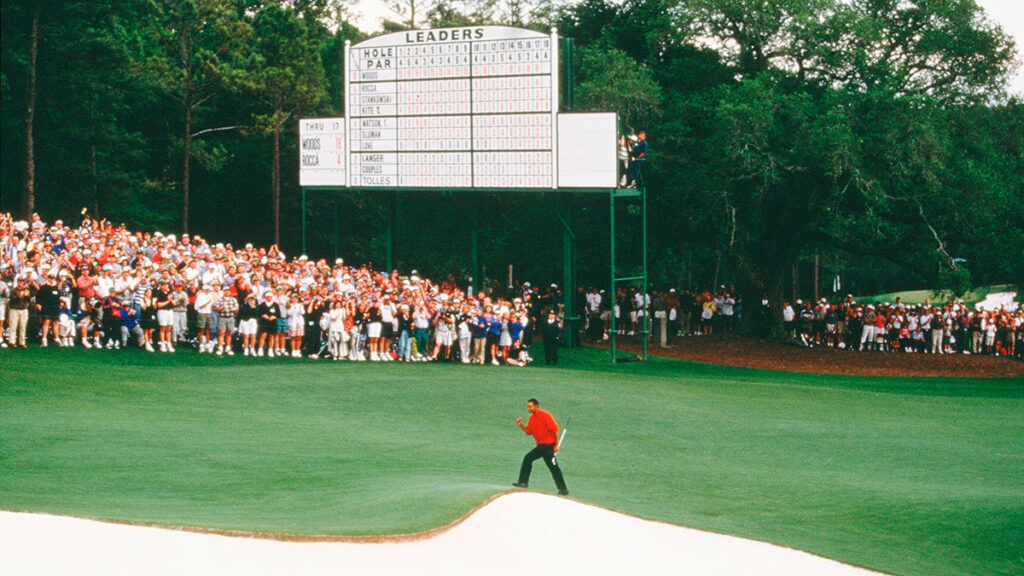
1997: The day Tiger Woods took over golf
Just before Tiger went to the first tee on Sunday in his first major as a pro, I put my arm around him and said, “This is your day. Go out and enjoy it.” After 66-65 on Friday and Saturday, he had a nine-shot lead, but Tiger was never a bragger, never looked back, always what’s next. I remember his response, with a knowing smile: “I’ve got this, Butchie.”
Tiger was ready for this stage, and his game was perfect for Augusta National – his length off the tee, his high ball flight, pressure putting. He hit irons into most of the par 5s that week, even wedges into 15 a couple of times. As the vibe went from what could be to breaking records, he played even better.
On Saturday night, Tiger did what would become a ritual for him: he sat down with his yardage book in a room by himself and played every hole in his head. Driver here, pick a club, aim there, knock it close, next hole. With all the variables in golf, Tiger was great at controlling what he could and being ready for the rest, even that week as a 21-year-old.
I told him on Sunday morning what Ben Hogan did when he was in contention: slow everything down. Walk slower, brush your teeth slower, drive to the course slower. Whether or not that landed with Tiger, he didn’t rush that morning. His putting, his warm-up were precise and calm, very routine.
We had talked about my dad, who won the Masters in 1948, saying the greatest feeling in the world is walking up the 72nd hole at Augusta with a five-shot lead, knowing you can’t lose. “Someday that’s going to be you,” I said. And there we were just a few days later, except Tiger’s lead was 12!
Tiger had arrived, ahead of schedule – to everyone but him.
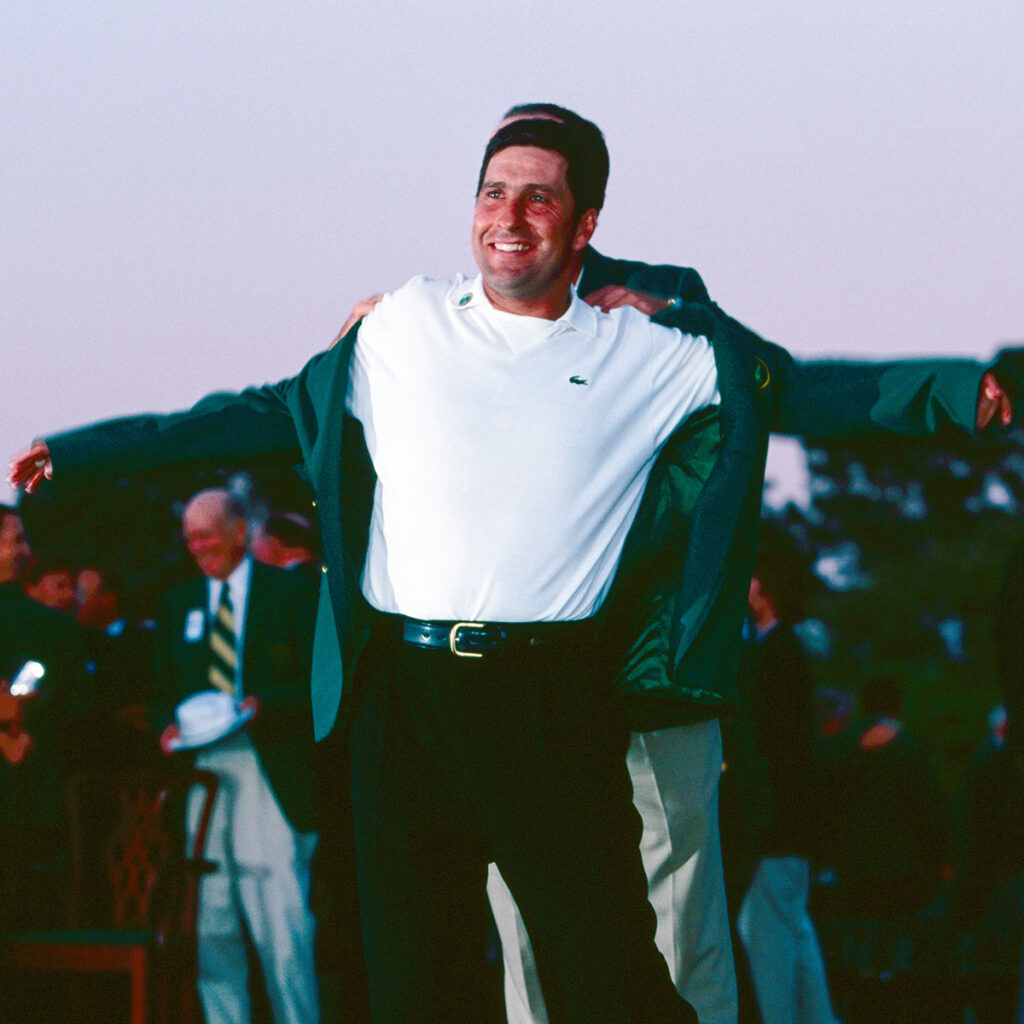
1999: Jose Maria Olazabal’s walk into history
When Jose got to Augusta that year, it was already a major victory. Soon after he won the ’94 Masters, he developed foot pain that often left him unable to walk. He thought his career was over. Then, a back specialist found the source of the pain, and he finally got treatment that worked. As a result, his attitude coming in that week was, in a word, grateful.
Ollie and I had worked together for many years. His short game is one of the all-time best, and as a competitor, he’s as tough as they get. Plus, he absolutely loves Augusta.
It was a mixed bag for Ollie through the first three rounds: 70 on Thursday, a brilliant 66 on Friday, 73 on Saturday. Going into the final round, he was one shot ahead of Greg Norman,
always a crowd favourite and now his pairing on Sunday.
The best story of that day happened on the par-5 13th. Still leading Greg by a shot, Ollie pushed his drive and laid up his second shot. Greg hit a big draw around the corner and a perfect iron to about 25 feet. Then Ollie wedged on, maybe five feet inside of Greg’s ball. Here’s where it gets fun.
As Ollie tells it, he found himself taking in the scene as they stood on that green surrounded by all the beautiful azaleas in full bloom and rows and rows of patrons 10 deep. It was an odd time to be daydreaming, and then suddenly the crowd went crazy. Greg had made his eagle putt.
Now I’ve heard Ollie tell this story many times, and someone always asks, “What happened next?” Ollie will say his thoughts were, How great is this? I thought I might never walk again, and here I am on Sunday at the Masters playing with Greg Norman with a chance to win. Then, in his thick Spanish accent, he’ll add, “Oh, yes, then I make my putt for birdie.”
I tell my players this story all the time because it’s about appreciation. It’s natural to get caught up in the competition and miss the experience, the joy. Ollie went on to win by two, and I don’t think that ever would have happened without the gratitude he felt for just being there.
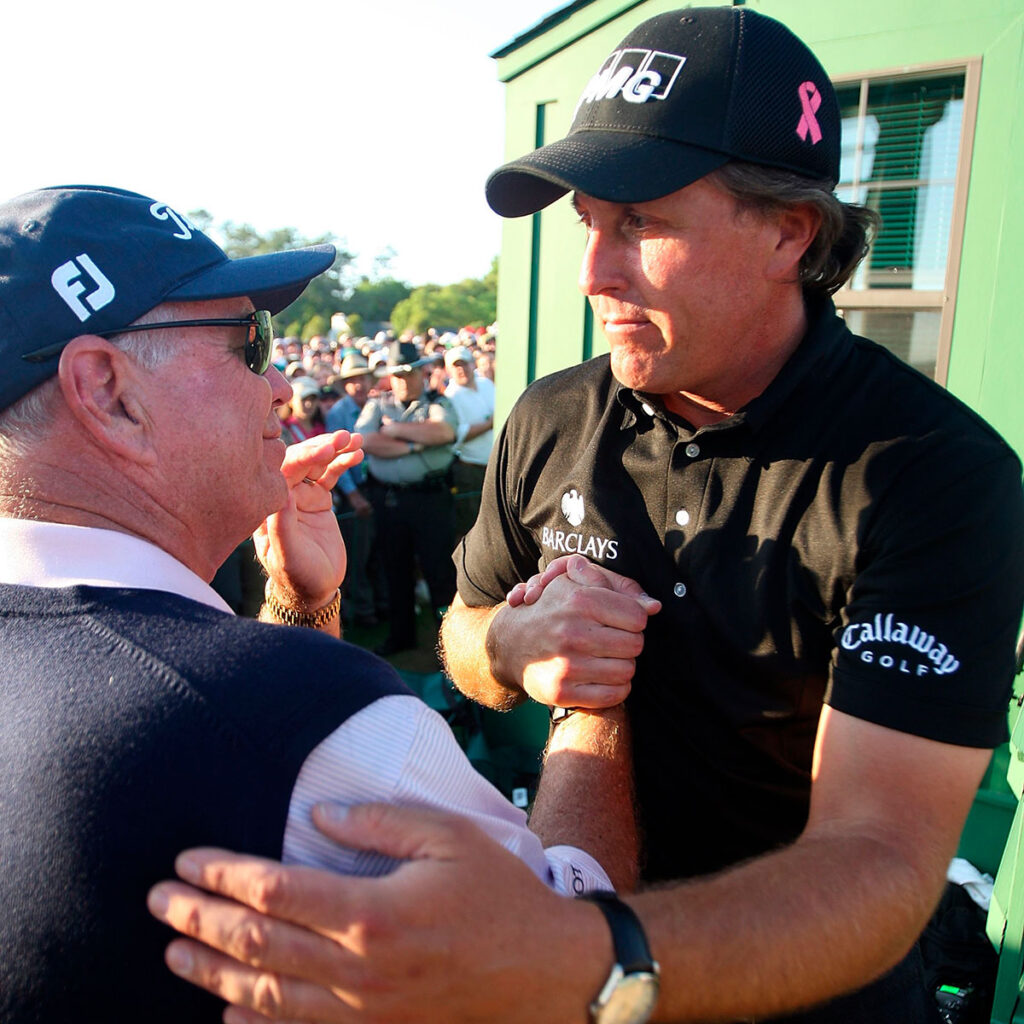
2010: A third green jacket for Phil Mickelson
Sometimes a major-championship victory can be traced to a single shot because it led to a birdie or eagle or gave the player a lift at a critical moment. In the case of Phil Mickelson’s clutch shot from the pinestraw to the 13th green in 2010, it was both.
I’d been coaching Phil since early 2007, and that week he really had his driver clicking, which usually put him in contention. Playing with the lead on Sunday, he hit his tee shot on 13 through the dogleg and ended up behind a pine tree. His longtime caddie, Bones Mackay, was trying to convince him to play it safe and get in position for a wedge shot, but Phil was having none of that. With TV mics picking up their discussion, Phil leaned in and told Bones that sometimes you have to suck it up and hit the right shot at the right time. This was the right time, and he was hitting this shot.
The funny thing is, I had walked ahead to get into position to see the green and the next tee. By the time I heard the crowd explode and saw his ball stop four feet from the hole, I assumed he had pitched out and that was his third shot. Nope. Phil had squeezed a 6-iron through the trees, carried it 200 yards over Rae’s Creek and dropped it next to the cup. It was a one-in-a-million shot.
He missed the eagle putt but made a longer one coming back for birdie to stay two ahead of Lee Westwood. The shot was critical to ensure a birdie, but the charge it gave Phil, a hugely emotional player, was what won him the tournament. Phil lives for pulling off the impossible. That boost helped him to make two more birdies coming in and win by three.
For me, the coolest part of that day happened after the round, when Phil was heading to Butler Cabin for the green jacket ceremony with Jim Nantz and then-Masters chairman Billy Payne. I gave him a hug and said, “Go get another green jacket.” Phil said, “No way, you’re coming with me. This is you and me. We did this.”
No player had ever invited me to that ceremony. I was very proud of that gesture, still am, because it proved what our relationship meant to him. Phil was great about giving credit, whether it was to me or Bones or whomever. It was the second time that day Phil showed what he’s all about.
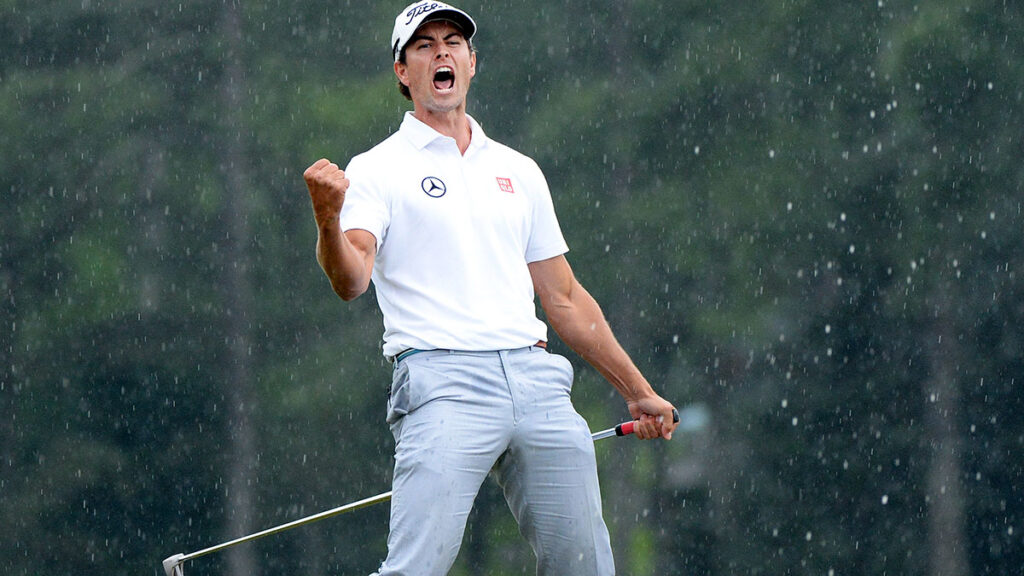
2013: Adam Scott’s playoff thriller
Before I get into what happened on Sunday in 2013, you have to understand how close I am to Adam Scott. To me and my wife, Christy, he’s like a member of the family. I met him when my friend Tom Crow, the founder of Cobra Golf, asked me to look after an Australian kid who was coming to play for UNLV, near where I teach outside Las Vegas.
When Adam came to see me for the first time in 1998, I was in the middle of my stretch with Tiger. I had Scottie hit some balls, and after a few swings I thought, I’ve seen this move before. I asked him if he’d tried to model his swing after anyone, and he said he and his dad loved Tiger’s swing and tried to emulate it. It was the closest I’d ever seen.
From that day on, Adam and I have been very close friends, sometimes working hard on his game, sometimes just keeping up on life. It was well known that an Australian had never won the Masters, with several near misses by Norman, and that fact was not lost on Adam, who is a proud Aussie.
In 2013, Scottie started the final round one shot off the lead, and after the front nine, he trailed Angel Cabrera by three. But three birdies over the final six holes, including one at the last, put him in a sudden-death playoff with Cabrera.
They both parred the first playoff hole, then headed to No.10. With rain coming down and the light fading, Scottie had a 12-footer for birdie to win. I was doing commentary for Sky Sports in the TV tower. I always try to stay neutral on telecasts and just say what I see, but this time it was hard. I also didn’t want to black-cat him by saying the wrong thing on television.
As he stood over that putt, I heard our producer in my ear: “Keep a camera on Butch. I want to see his reaction.” When the putt curled in, I went crazy, broke my cardinal rule. Then my on-air partner, Ewen Murray, turned to me and said, “Butch, what do you think?” I had tears streaming down my face. I couldn’t get the words out.
That’s as emotional as I’ve ever been watching one of my guys win. Scottie signed a Masters flag for me with the most beautiful message that starts, “Coach, mentor and great mate…” That flag hangs in the same hitting bay where I watched him hit those first balls more than 25 years ago.
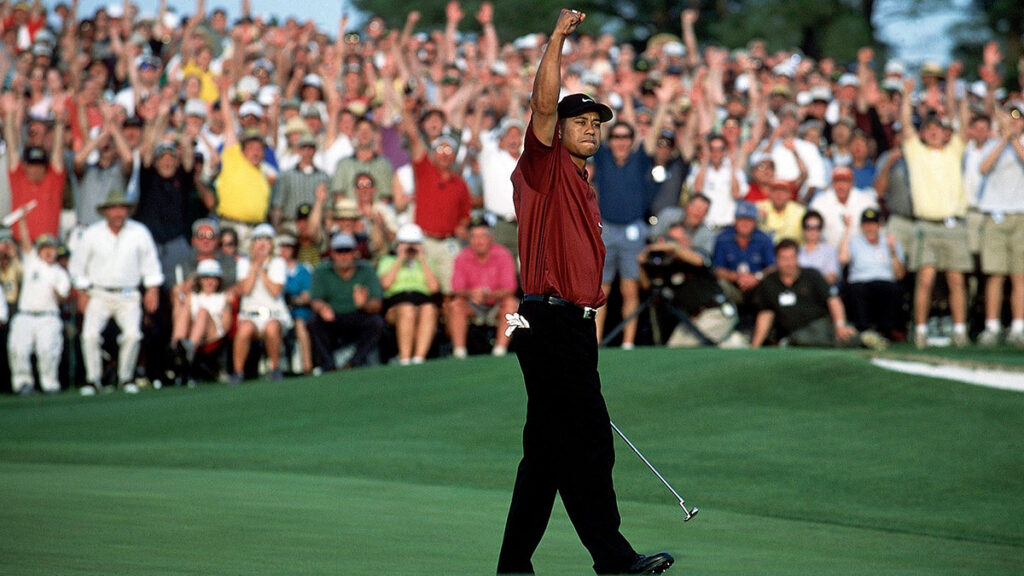
2001: The last leg of the Tiger Slam
Tiger’s run in the majors during the summer of 2000 was the most dominant in history. He won the US Open by a record 15 shots, the Open Championship by eight, then the PGA in a playoff. Winning the 2001 Masters would mean holding all four professional major titles at one time, which had never been done. Tiger was always comfortable with “never been done”.
Before we got to Augusta in 2001, he worked hard to keep up his form from the year before. His prep for majors was unlike any player’s I’ve ever seen. Not only would he practise shots in the weeks before a major that he knew he’d need, he would play them in tournaments leading up to it, even when the situation didn’t call for them.
That year, he won his last two events before the Masters – Bay Hill and the Players – and he was hitting his “Augusta shots”, like high draws with the driver and little spinny wedges, to win those tournaments. It was his secret prep that only we knew. By the time we got to Augusta, it was like he’d been competing there for weeks.
With the prospect of his winning four straight majors, it’s all anyone was talking about early that week. I knew the best thing I could do for him was not mention it. We kept our conversations light and his practice sessions crisp and routine. He did his workouts every morning, and when he got to the club, it was about warming up and focusing on how the course was going to play that day – the wind, hole locations, shot shapes.
He did exactly what he had to for the first three rounds (70-66-68) to get himself in position to close out the so-called Tiger Slam and stood one shot ahead of Phil. Sunday’s pre-round preparations were impeccable. As usual, he spent time on the putting green first, finding the types of putts he anticipated having with Augusta’s Sunday pins, then went to the range to warm up.
As he headed to tee off, I took a quick moment with him, told him to go take care of business. He gave me a nod, didn’t even say anything, didn’t have to. We both knew the gravity of the day. I never really had a doubt that he would win, even before the week started. He was the best at his best.
Through nine holes, he was one shot clear of Phil and David Duval, and he kept his lead by a shot or two throughout the back nine. Standing on the 18th tee, he led David by a stroke and Phil by two. With history waiting, he hit his longest drive of the week up the last fairway, wedged it just right of the pin and then rolled in an 18-footer for birdie.
After the post-round hugs, I finally let myself think about what it all meant. It’s damn hard to win a major, but four in a row with the whole world reminding you of what’s at stake? I realised more than ever that those are the moments Tiger plays for. That’s his fuel. There’ll be other great feats in golf, but I don’t think anyone will touch the Tiger Slam.
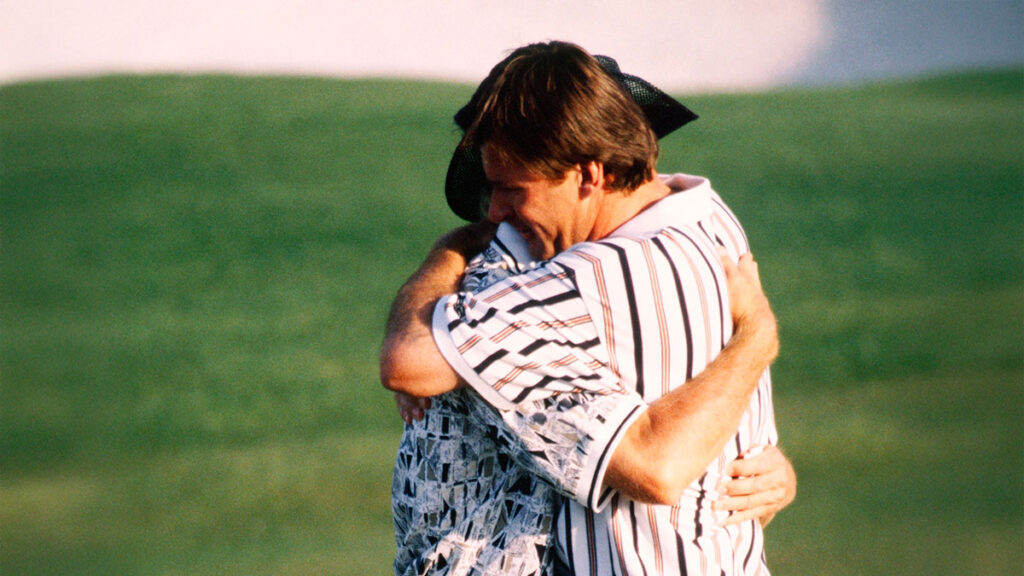
1996: Greg Norman’s Masters downfall
I include this as one of my unforgettable Sundays because if you were there, it left a mark on you. A six-stroke lead over Nick Faldo going into the final round dwindled to three at the turn, then it all went sideways. Greg shooting 78 after three under-par rounds, including a record 63 on Thursday, still seems crazy. But that’s why they play four rounds.
The simplest way I can put it is, when Greg showed up on Sunday morning, he was not the same player who left Saturday night. He seemed uptight and agitated. We went to the range, and he said his swing didn’t feel right. I assured him there was nothing wrong with his mechanics; he was just quick from the top. We worked on getting him to finish his backswing, not rush the club down, but he just felt out of sorts.
Greg’s troubles really started in the middle of the round, when he hooked a 3-wood on the eighth hole and was lucky to make par, followed by missing the green and not getting up and down on nine and 10. On 11, he hit two perfect shots to about 10 feet but lipped out the birdie and then missed the comebacker. The final blows were shots in the water on 12 and 16.
I was walking with Greg’s wife and daughter, and when things turned bad, it was hard to bear some of the comments in the crowd. When he pulled it badly into the water on 16, I suggested they walk in. There wasn’t anything more to see.
After the round, Greg’s caddie, Tony Navarro, and I waited for him in the locker room. I honestly didn’t know what to expect. Greg is very disciplined but also very intense. I’ll admit I was anticipating some things getting thrown around. But he walked in, looked at us and said, “I guess we just didn’t have it today, boys. We’ll get ’em next year.”
In hindsight, I shouldn’t have been surprised about how well he took it. Greg always had perspective. He kept his hand in various businesses, from equipment and apparel to things like wine, so it was never just the golf for him. He didn’t get it done that day, but you can’t break Greg Norman.
Main image: Stephen Denton
